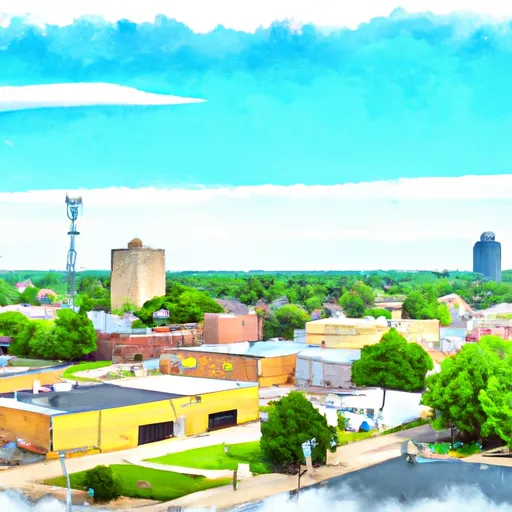-
 Snoflo Premium
Snoflo Premium
Get unlimited access to all our content
With no Ad interruptions! - Start Your Free Trial Login with existing account
La-Place
Eden Index
Climate
8.1
•
Recreation
3.1
•
Community
•
Safeguard
4.3/10

La-Place, Illinois, located in Macon County, offers a diverse range of outdoor recreational opportunities, complemented by its unique climate and hydrology constituents. The region experiences a humid continental climate, characterized by hot summers and cold winters. Summers are typically warm, with average temperatures ranging from 75°F to 90°F, providing favorable conditions for outdoor activities such as hiking, camping, and fishing. Winters are cold, with average temperatures ranging from 20°F to 40°F, allowing for activities like ice fishing, cross-country skiing, and snowshoeing.
La-Place is blessed with abundant hydrological features. The Sangamon River, a major waterway in the area, flows through the region, providing opportunities for boating, kayaking, and canoeing. Additionally, numerous lakes and ponds dot the landscape, offering excellent fishing and swimming spots. Anglers can find a variety of fish species, including bass, catfish, and crappie, making La-Place a haven for fishing enthusiasts.
Outdoor recreation opportunities in La-Place extend beyond water activities. The region boasts beautiful parks and nature reserves, providing ample space for hiking, picnicking, and bird-watching. The natural beauty and diverse landscapes of La-Place make it an ideal destination for outdoor enthusiasts seeking to immerse themselves in nature's wonders.
What is the Eden Index?
The Snoflo Eden Index serves as a comprehensive rating system for regions, evaluating their desirability through a holistic assessment of climate health, outdoor recreation opportunities, and natural disaster risk, acknowledging the profound impact of these factors on livability and well-being.
Climate Health Indicator (CHI): 8.1
La-Place receives approximately
1001mm of rain per year,
with humidity levels near 84%
and air temperatures averaging around
12°C.
La-Place has a plant hardyness factor of
5, meaning
plants and agriculture in this region thrive during a short period during spring and early summer. Most
plants will die off during the colder winter months.
By considering the ideal temperature range, reliable water supplies, clean air, and stable seasonal rain or snowpacks, the Climate Health Indicator (CHI) underscores the significance of a healthy climate as the foundation for quality living.
A healthy climate is paramount for ensuring a high quality of life and livability in a region, fostering both physical well-being and environmental harmony. This can be characterized by ideal temperatures, reliable access to water supplies, clean air, and consistent seasonal rain or snowpacks.
Weather Forecast
Streamflow Conditions
Kaskaskia
Area Rivers
Kaskaskia
Snowpack Depths
Kaskaskia
Reservoir Storage Capacity
Kaskaskia
Groundwater Levels
Recreational Opportunity Index (ROI): 3.1
The Recreational Opportunity Index (ROI) recognizes the value of outdoor recreational options, such as parks, hiking trails, camping sites, and fishing spots, while acknowledging that climate plays a pivotal role in ensuring the comfort and consistency of these experiences.
Access to outdoor recreational opportunities, encompassing activities such as parks, hiking, camping, and fishing, is crucial for overall well-being, and the climate plays a pivotal role in enabling and enhancing these experiences, ensuring that individuals can engage in nature-based activities comfortably and consistently.
Camping Areas
| Campground | Campsites | Reservations | Toilets | Showers | Elevation |
|---|---|---|---|---|---|
| Lake Perry | 20 | 157 ft | |||
| Turkey Fork Rec. Area | 76 | 278 ft | |||
| Clarkco State Park | None | 273 ft | |||
| Shepard State Park | None | 16 ft | |||
| Maynor Creek Waterpark | None | 362 ft | |||
| Dunns Falls Water Park | None | 269 ft | |||
| Gulf Marine State Park | None | 6 ft | |||
| Archusa Creek Waterpark | 69 | 315 ft | |||
| Twiltley Branch - Okatibbee Lake | None | 421 ft | |||
| Davis Bayou - Gulf Islands National Seashore | 52 | 19 ft |
Nearby Ski Areas
Catastrophe Safeguard Index (CSI):
The Catastrophe Safeguard Index (CSI) recognizes that natural disaster risk, encompassing floods, fires, hurricanes, and tornadoes, can drastically affect safety and the overall appeal of an area.
The level of natural disaster risk in a region significantly affects safety and the overall livability, with climate change amplifying these risks by potentially increasing the frequency and intensity of events like floods, fires, hurricanes, and tornadoes, thereby posing substantial challenges to community resilience and well-being.
Community Resilience Indicator (CRI):
The Community Resilience Indicator (CRI) recognizes that education, healthcare, and socioeconomics are crucial to the well-being of a region. The CRI acknowledges the profound impact of these elements on residents' overall quality of life. By evaluating educational resources, healthcare accessibility, and economic inclusivity, the index captures the essential aspects that contribute to a thriving community, fostering resident satisfaction, equity, and social cohesion.

